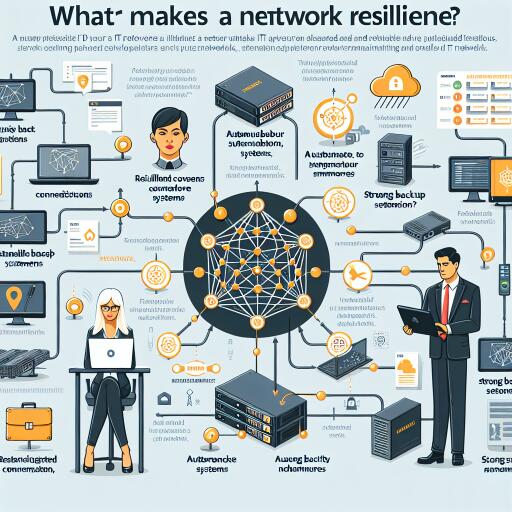Exploring the Backbone of a Robust Network in Modern Warfare
In the rapidly evolving arena of modern warfare, the ability for armed forces to operate in concert through seamless communication is paramount. The necessity for swift, unified action in the face of conflict has never been more critical. This requires an infrastructure capable of supporting comprehensive coordination efforts to outmaneuver adversarial forces effectively. As warfare becomes increasingly technology-driven, the agility and adaptability of communication systems stand at the forefront of mission success and the protection of forces on the ground.
The concept of resilience in military networks, although lacking a uniform definition or standard within the defense sector, is fundamental to the development of Combined Joint All-Domain Command and Control (CJADC2) capabilities. The essence of CJADC2 networks lies in their ability to integrate operations across all branches of the military, ensuring that critical information is shared and acted upon across every domain of warfare. The establishment of these networks is not just about enhancing operational efficiency; it’s about safeguarding the lives of service members through superior technological and strategic advantage.
Digital warfare includes a myriad of challenges, especially in the cyber and Electronic Warfare (EW) fronts. These spheres have grown to be integral components of contemporary combat scenarios. Communication channels, particularly susceptible to jamming and interference by adversaries, need to be fortified with advanced anti-jamming waveforms. These sophisticated waveforms are essential for penetrating enemy defenses and ensuring that vital information reaches its intended recipients without delay or disruption, irrespective of the surroundings’ complexity.
It’s not merely about maintaining communication lines; it’s about rendering the operations of adversaries ineffective. A resilient communication network is adept at minimizing the enemy’s ability to detect and predict the movements and intentions of troops. By obscuring the locations and plans of communication users, such networks add a layer of unpredictability and protection for forces navigating through contested environments.
The stakes in modern conflict are exceptionally high, with technological supremacy often dictating the outcome of engagements. As such, the development and maintenance of resilient networks that can withstand and adapt to the multifaceted challenges presented by adversaries are non-negotiable. These networks must not only endure but also thrive under pressure, leveraging superior technology and strategy to ensure the free flow of information even in the most adverse conditions. The safeguarding of these lines of communication is a critical component of operational strategy that directly impacts mission effectiveness and the survival of troops in the field.
As warfare continues to morph with the advent of new technologies, the discussion around network resilience is increasingly relevant. Defining, understanding, and implementing resilience into military communication networks is a task that requires continuous evaluation and adaptation. The ultimate goal is to ensure that armed forces can maintain dominance in the cyber and electronic domains, crucial theaters of modern warfare, where the battle for information superiority can decide the fate of entire campaigns.
In conclusion, the resilience of military networks forms the bedrock upon which successful, agile, and integrated multi-domain operations rest. It’s about creating a system that not only survives in the face of enemy actions but also thrives, ensuring operational security, efficiency, and, ultimately, the safety of military personnel. As the digital battlespace evolves, so too must the defenses we construct, highlighting the ongoing journey towards unassailable communication networks in the realm of modern warfare.









